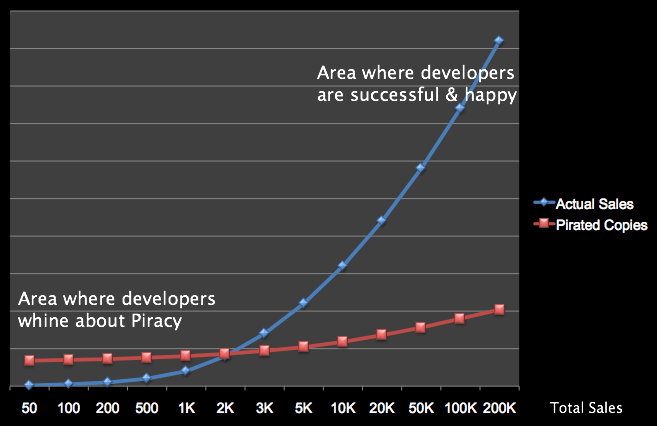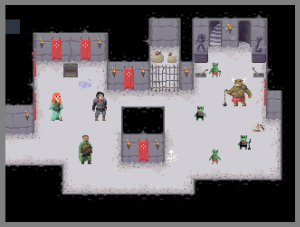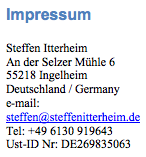Todays link is one that I came across recently and I believe you’ll find that very helpful. Simon Skinner (@vultuk) wrote a blog post and published the source code for his implementation of a UIScrollView-like page scrolling layer implemented with Cocos2D. It behaves similar to browsing photos in the Photo application, with snapping and bouncing and all that. See this video:
Read Simon’s article on the Debug, Design, Assemble, Play (DK101) blog and grab the source code here: Implementing Page Scrolling in Cocos2D
Add your link to the Cocos2D Linkvent Calendar
Do you have something to share with the Cocos2D community? I haven’t received enough submissions to fill all the days until Xmas, although I do have enough links to post one each day, I’d rather post a link to your website or blog post.
Regardless, this may be the answer. Or as close to it as any publicly shared link list not hosted on link aggregator sites could ever be. I’m talking about Amit Patel’s Game Programming Information pages. There’s something for everyone, but specifically a lot of articles about pathfinding, AI and tile-based games including procedural world generation.
Or, in other words, I’ll be away from home (which happens to be my office) from Tuesday (tomorrow) to and including Friday for a much needed short vacation. That is to say I’ll probably be unresponsive for the rest of the week and I’ll catch up on emails next week, please be patient.
At one day I’ll be visiting the Miniatur Wunderland in Hamburg, the world’s largest model railroad exhibition, on Wednesdy or Thursday. On the off-chance that you’re in the Wunderland too and would like to meet me in person, send me an email. Maybe we find a time to meet up and have a quick chat and connect. Speaking of meeting, I’ll also hold a cocos2d presentation (in german) at this year’s Macoun conference in Frankfurt, October 2nd and 3rd where I’d be happy to meet up with you, if you happen to be there. And in general, if you’re able to come to Mainz we can meet up just to connect and talk about experiences, like I recently did with Johannes Seidel from Blacksmith Games. That was a meeting I enjoyed very much, I was pleasantly surprised to hear that he was also the person behind the AppventCalendar, which essentially spawned Free App A Day (run by someone else). He also had some great marketing ideas that helped make his game Plushed a success (before you ask: it’s made with Unity). And it’s a deserved success. Definetely watch out for more games from him, and follow him on Twitter.
Those developer experiences and life stories are very inspiring and a fun thing to hear and talk about. I’ve been reading a lot of Paul Graham’s Essays once again because he’s the go-to guy for those kinds of experiences in writing, and I bought Founders at Work for exactly the same reason. Motivation, inspiration and thinking outside the box. For that I’m very happy that I can read those essays, docs and eBoos on my wirelessly (meaning: no wifi) iPad by using Instapaper and GoodReader for eBooks. Have I ever used iBooks? No, I don’t need it thanks to these two excellent iPad Apps.
Before I sound too much like a product marketer … I’ll see/hear/write/email you next week!
If you think your game suffers tremendeously from App Store Piracy, you’re wrong. To put it bluntly: your game has simply failed on the market!
Reports that put the App Store piracy rates at “at least 60%” and developers reporting piracy rates of 80% and even up to 95% are mathematically correct but what they often forget to tell you are actual sales numbers. In the rare cases where Indie developers also mention how many sales they have made, pirates or not, these numbers are always extremely low. For a commercial developer who reports an 80% piracy rate on one of his games it’s simply an attempt to turn terrible sales into a PR story which might give their game a little bit more attention. In fact, i expect the games who report piracy rates of over 30% to have sold no more than 5,000 copies. At $.99 this creates a revenue of $3,500 - maybe a good number for a two-man team but a catastrophe for a commercial developer. This is hardly a problem caused by piracy but a simple failure of the product on the market.
What you have to understand about Software Pirates in general: they use a lot of software. In fact, this is their hobby and favorite passtime, to try out as much software as they can get their hands on. So you will always have a minimum amount of pirated copies of each piece of software, no matter how successful this software is (or not). Of course, with higher success and more sales of the software more pirates are also likely to use it because they, too, value quality software. But given the amount of jailbroken iPhone devices prepared to run pirated software there’s a hard cap of the maximum amount of piracy you will ever see on any title. Just as much as there will be a minimum number of pirates playing every game as soon as it becomes available and regardless of how successful it is on the App Store. If your sales are close or below that minimum number of pirates, you naturally get piracy rates of over 50%. These pirates don’t cut into your revenue however. Ignore them. They never would have bought your App in the first place!

David Rosen from Wolfire reports in his Another View on Piracy article that the highest number of Jailbroken iPhones worldwide is said to be 10%, and in the USA - whose users constitute about two thirds of the iPhone/iPod market - the number of jailbroken devices is just 5%. Assuming a total installed base of 75 Million iPhones (50 Mio. as of April 2010) and iPod touches (20 Mio. as of Sept. 2009) we get at most 7.5 Mio jailbroken devices worldwide, or approximately 2.5 Mio jailbroken devices in the USA. They are not all pirates, however. PinchMedia reports that 38% of jailbroken devices have run at least one pirated App. They also state this number is low. So let’s just take half and we’ll end up with 3.75 Mio. jailbroken devices worldwide which have run at least one pirated App. Still a pretty high number - but it only tells us that they have started one pirated App but not how many or how much of a pirate these users really are. If i had to guess i would say that 10% or just about 400,000 of these users are active pirates who try out a lot of Apps on an almost daily basis. These are the pirates who make the biggest impact in terms of per-App piracy numbers. They are also the users who are least likely to upgrade their pirated copy to a legal one, if they ever do it at all. And trying to fight these pirates is anything but futile - they will never be your customers!
PinchMedia also supports my theory that most Pirates try out as much Software as they can which, of course, leaves less time to use each App intensely: “Pirated applications are used less frequently, less intensely, and for a shorter overall length of time than purchased applications.”
Let’s go back to the gist of it: developers who have a problem with App Store Piracy have, in my opinion, either a problem of perception or they’re making a simple PR statement aimed at getting them more attention, hoping to achieve better sales. The developers who suffer most from App Store Piracy are those who simply are not successful. Their real problem isn’t Piracy, it’s much more likely that they failed either at Marketing, Timing, Quality or finding their Target Audience.
Let me sum this up with a simple chart which i think explains why App Store developers report amazingly high piracy rates, when in fact they are reporting the commercial failure of their App:












